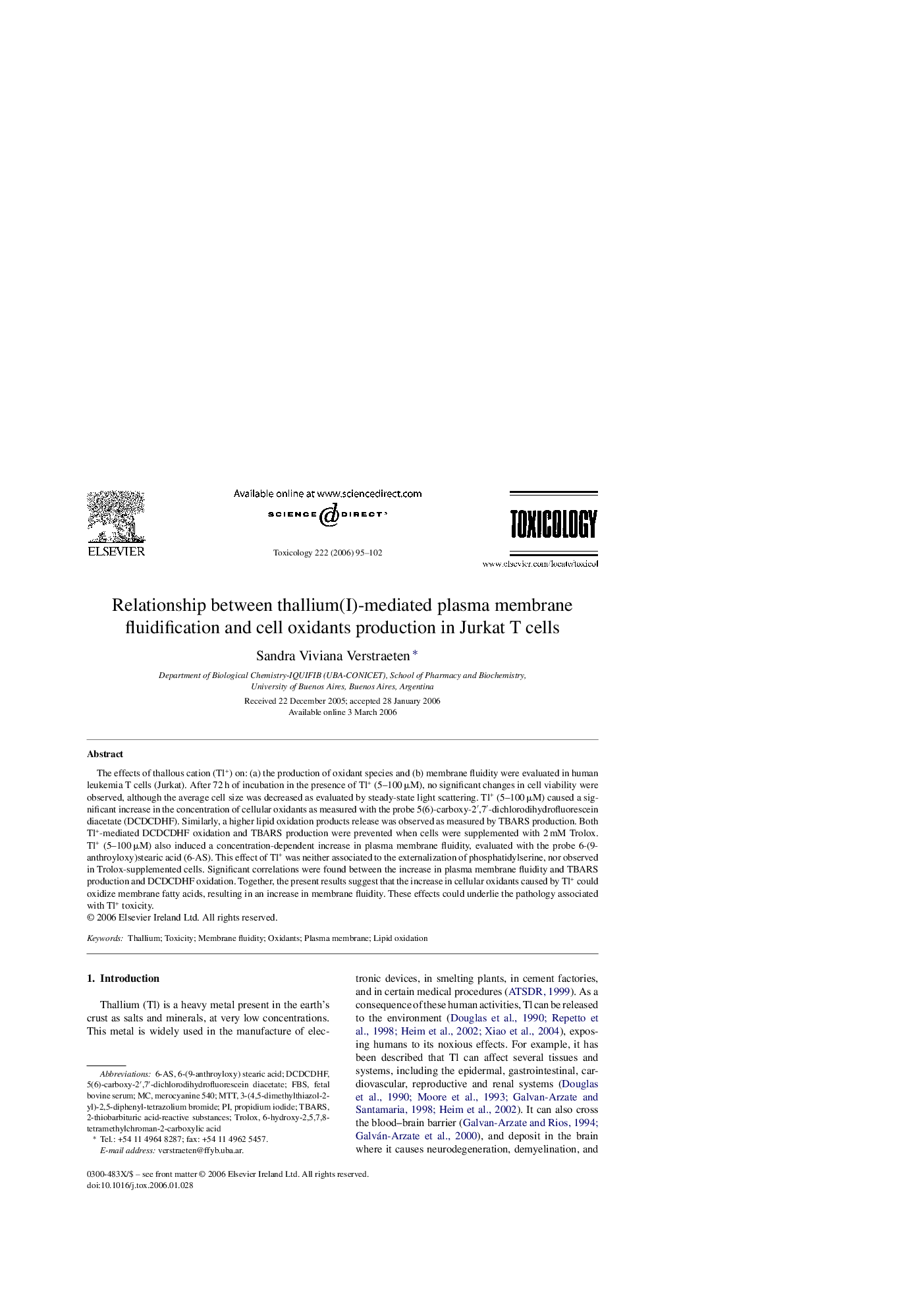| Article ID | Journal | Published Year | Pages | File Type |
|---|---|---|---|---|
| 2598302 | Toxicology | 2006 | 8 Pages |
The effects of thallous cation (Tl+) on: (a) the production of oxidant species and (b) membrane fluidity were evaluated in human leukemia T cells (Jurkat). After 72 h of incubation in the presence of Tl+ (5–100 μM), no significant changes in cell viability were observed, although the average cell size was decreased as evaluated by steady-state light scattering. Tl+ (5–100 μM) caused a significant increase in the concentration of cellular oxidants as measured with the probe 5(6)-carboxy-2′,7′-dichlorodihydrofluorescein diacetate (DCDCDHF). Similarly, a higher lipid oxidation products release was observed as measured by TBARS production. Both Tl+-mediated DCDCDHF oxidation and TBARS production were prevented when cells were supplemented with 2 mM Trolox. Tl+ (5–100 μM) also induced a concentration-dependent increase in plasma membrane fluidity, evaluated with the probe 6-(9-anthroyloxy)stearic acid (6-AS). This effect of Tl+ was neither associated to the externalization of phosphatidylserine, nor observed in Trolox-supplemented cells. Significant correlations were found between the increase in plasma membrane fluidity and TBARS production and DCDCDHF oxidation. Together, the present results suggest that the increase in cellular oxidants caused by Tl+ could oxidize membrane fatty acids, resulting in an increase in membrane fluidity. These effects could underlie the pathology associated with Tl+ toxicity.
